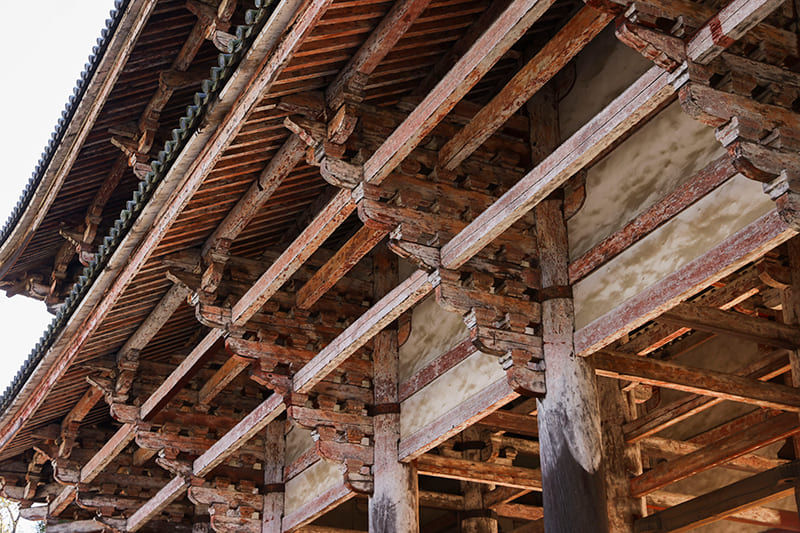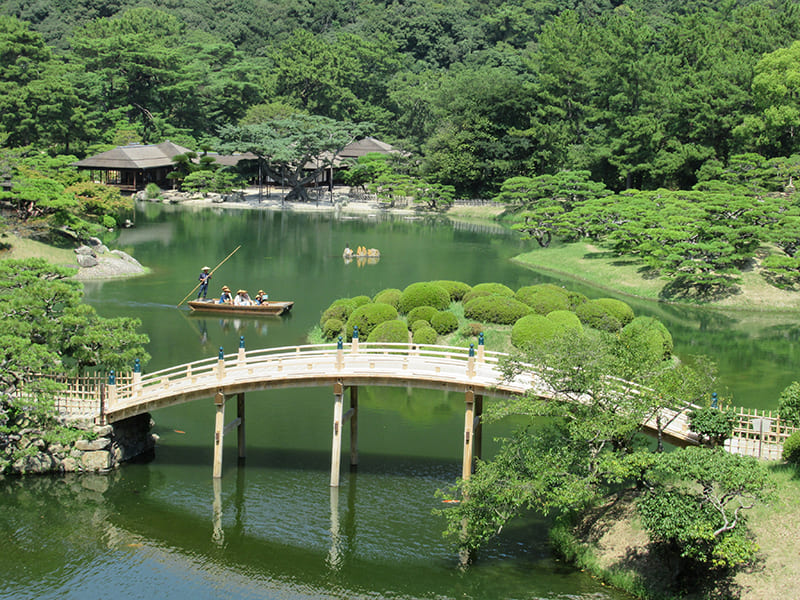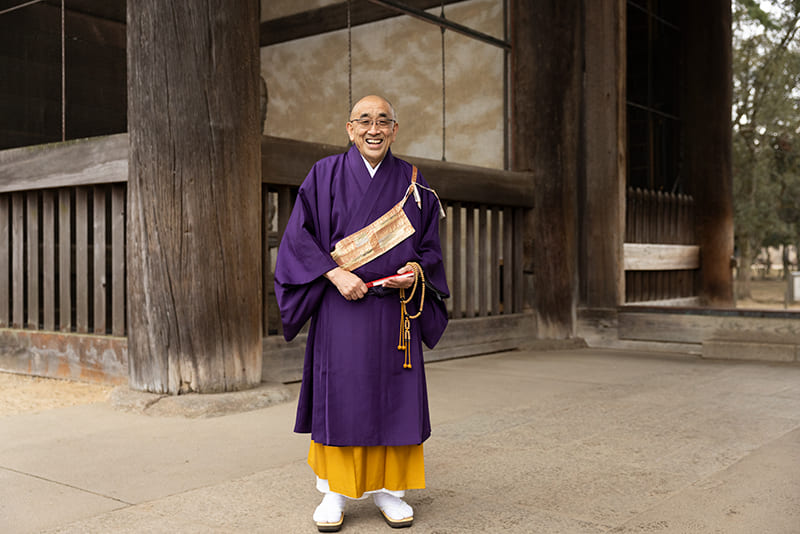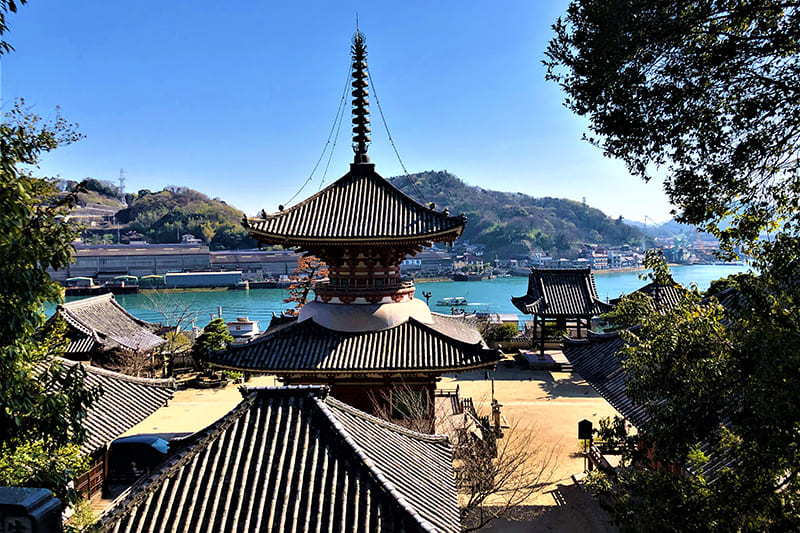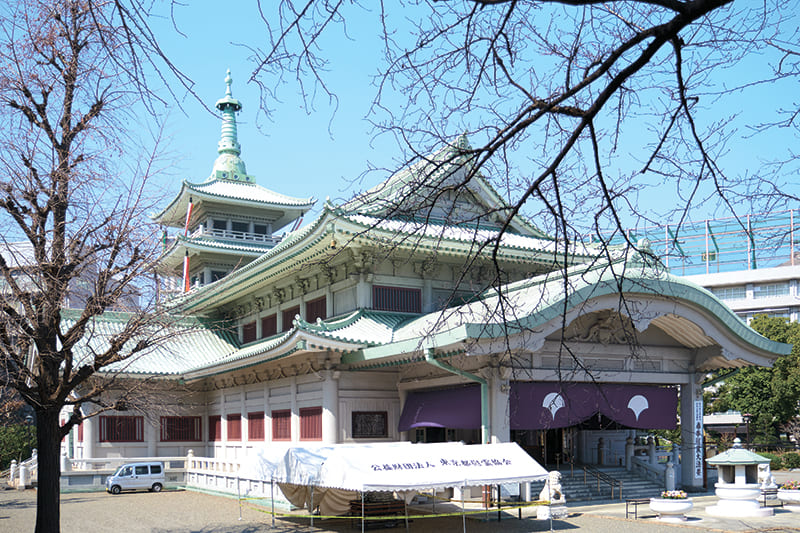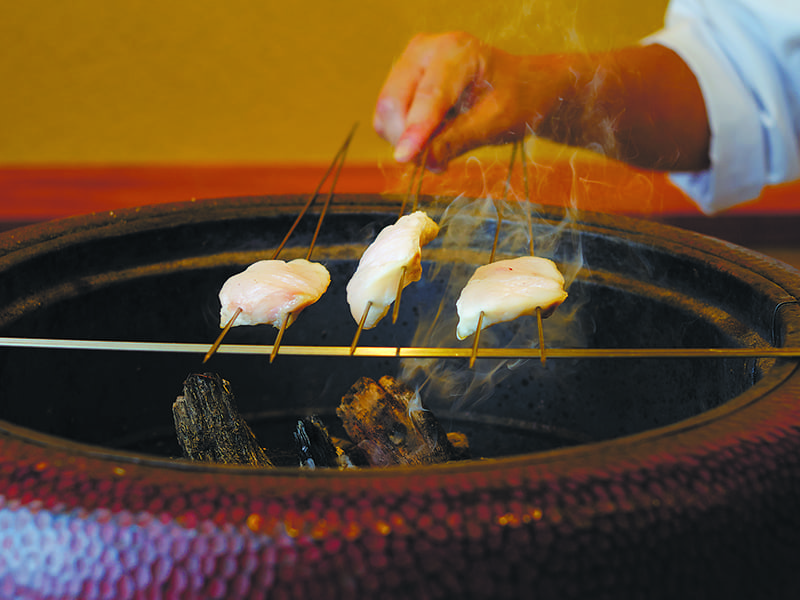January 26, 2024
Visiting Todaiji, a trove of cultural treasures
NATIONAL TREASURE
Why was the Great Buddha built at the temple of Todaiji? The answer is deeply connected with the history of Japan.
During the tumultuous Nara Period (710-784), which saw smallpox epidemics and ongoing political conflict, Emperor Shomu adopted Buddhism as a kind of state religion, and in 741 established a national system of government-run temples known as kokubunji to be located in each province.
Todaiji was the head temple. A nearly 15-meter-tall Buddha statue was built at its center as an offering to achieve the salvation of all things. The Great Buddha was completed after three years of casting, followed by the construction of the Great Buddha Hall, a lecture hall, monks’ quarters and two seven-story pagodas, together comprising a vast complex. Todaiji was also a center of learning, and it is believed that priests from all the kokubunji temples in the country gathered to study there.
However, Todaiji’s subsequent history was punctuated by repeated calamities and reconstructions. In 1180, most of the temple, including the Great Buddha Hall, was destroyed in a war, but it was immediately rebuilt as a national project. In 1567, it was again damaged by war, and much of the Great Buddha Hall and temple were destroyed by fire. Reconstruction was delayed until the Edo Period (1603-1868) due to political instability, with the current (and slightly smaller) Great Buddha Hall completed in 1709.
While Todaiji was for many years protected by the government, it faced a crisis in the Meiji Era (1868-1912), when the government enforced the separation of Buddhism and Shintoism and elevated Shintoism, paving the way for much Buddhist temple land to be confiscated. The situation improved when reforms were introduced to allow the levying of admission fees at temples and shrines, and laws for the preservation of cultural properties were introduced.
Since then, conservation and repair projects have been carried out at Todaiji, including major repairs to the Great Buddha Hall in the Meiji and Showa (1926-1989) eras, and pioneering disaster prevention measures have also been implemented, resulting in the comprehensive system of cultural property management that exists at the temple today.
The entire complex measures some 34 hectares and is home to numerous cultural properties, including eight buildings that are National Treasures.
In recent years more than 3 million people from around the world have visited each year. In both its scale and history, the temple conveys the depth and complexity of Buddhism in Japan.
Todaiji
The temple of Todaiji is located in Nara, once the capital of Japan, and has a history spanning nearly 1,300 years. It is a World Heritage site. The temple complex contains 31 National Treasures (including eight buildings) and 123 Important Cultural Properties (including 14 buildings). Many of the buildings have been rebuilt on several occasions, including the Great Buddha Hall, which was destroyed in wars in 1180 and 1567. The complex is 34 hectares in total, housing buildings and works of art and craft from various eras, including the Sangatsu-do hall and Tegai-mon gate from the Nara Period and the Nandai-mon gate and bell tower from the Kamakura Period. The Great Buddha Hall was rebuilt during the Edo Period. Major repairs were completed from 1903 to 1913, in the Meiji Era, and from 1973 to 1980, in the Showa Era.
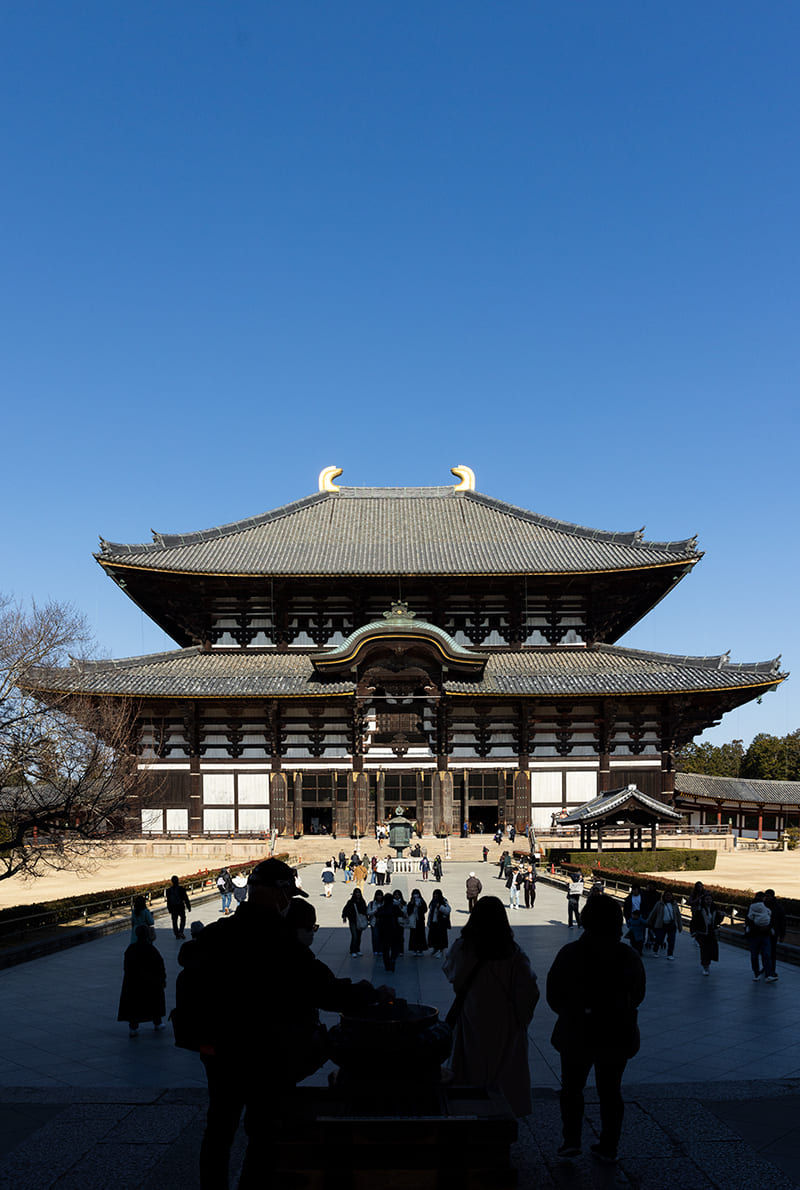
Great Buddha Hall
(1709)
First constructed in 751, the hall was destroyed by fire twice before the current building was constructed in the middle of the Edo Period. At 57 meters wide, 50.5 meters deep and 46.8 meters high, it is one of the largest extant wooden structures in the world. It is said to have been even larger at the time of its initial construction, with a width of approximately 86 meters. The architectural style employed for the Kamakura Period reconstruction was known as daibutsuyō (Great Buddha style), and it went on to influence much other temple architecture that followed. The existing Great Buddha Hall exhibits a mixture of the original style as well as daibutsuyō, along with Edo Period additions that are discernible in the eaves and ceiling at the front center. The building was designated a National Treasure in 1952.
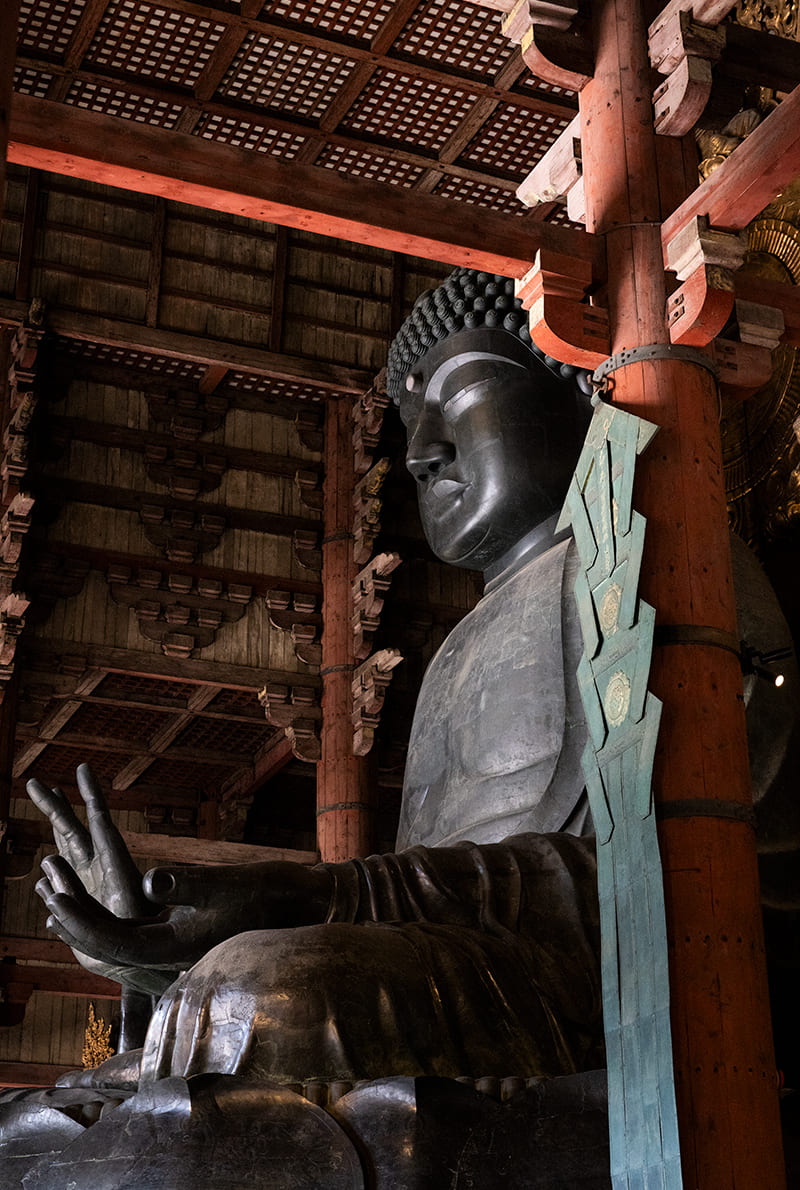
The Great Buddha (Vairocana Buddha)
(752)
The Great Buddha statue depicts Vairocana, the Buddha who is said to be the savior of all things. It is made of copper and now stands 14.98 meters tall. Production began in 745, and after three years and eight rounds of casting and finishing, the eye-opening ceremony, which is said to put the soul into the statue, was held in 752. The statue was damaged by fires caused by wars twice in its history and so had to be repaired. The current head dates from the Edo Period and most of the body from the Kamakura Period, but some parts, such as portions of the pedestal, are the originals from the Nara Period. The statue was designated a National Treasure in 1958.
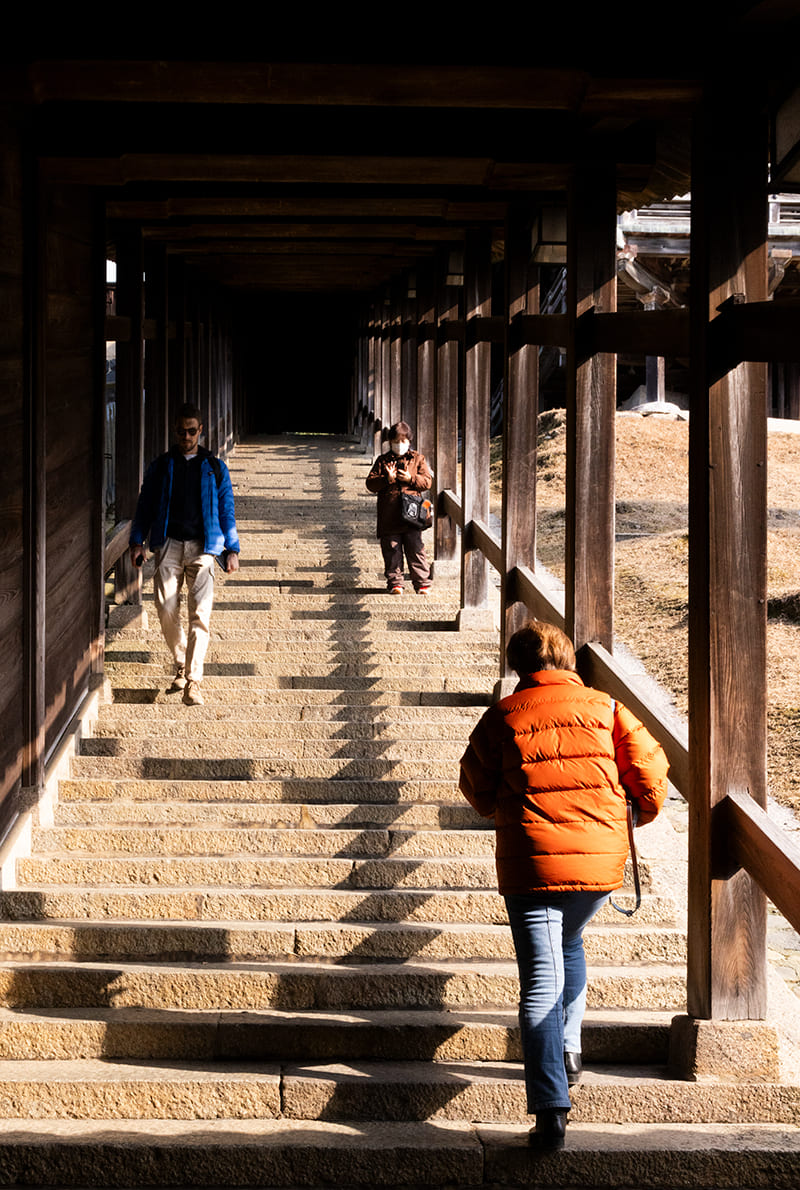
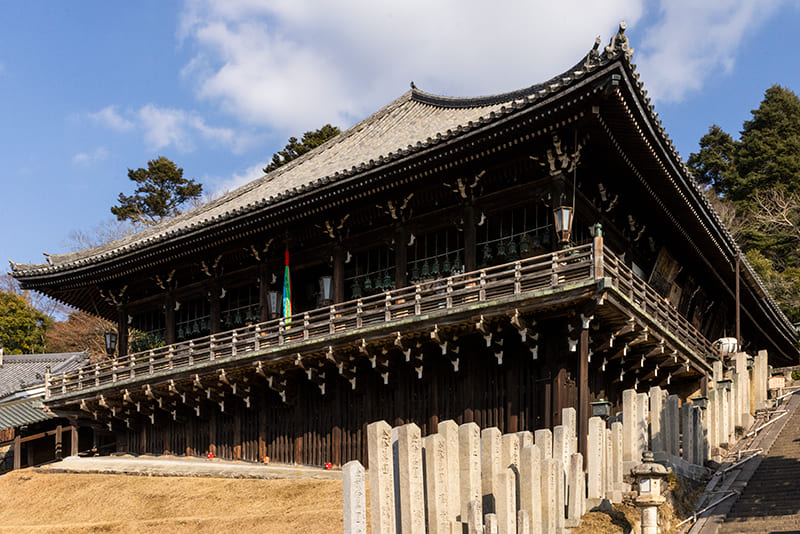
Nigatsu-do
(1669)
The hall’s named comes from its use for the Buddhist Shuni-e ceremony, a rite of repentance commonly known as o-mizutori, which is held during the second month of the lunar calendar, Nigatsu. Based on an original structure that dates back to the Nara Period, the building was repeatedly expanded to accommodate the ceremony but was destroyed in 1667 in a fire that broke out during the ceremony. It is thought that the Shuni-e ceremony has continued uninterrupted since the Nara Period, and so the building has deep cultural and historical significance due to its connection with this traditional ritual. It was designated a National Treasure in 2005.
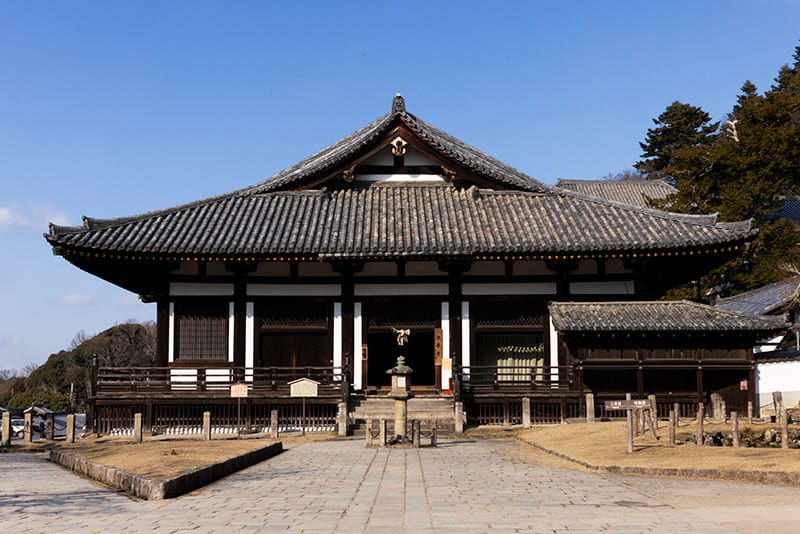
Hokke-do (Sangatsu-do)
(image hall: first half of the eighth century; worship hall: late 12th to 13th centuries)
This is the oldest building within the Todaiji complex and is estimated to have been constructed between 733 and 747, based on ancient records and studies of the building materials. The building was originally constructed in the sōdō style, meaning that two separate structures were combined under a single roof: the image hall (shōdō) in the rear, where the Buddha statue is enshrined, and the worship hall (raidō) in the front. The worship hall was rebuilt in later generations. The image hall is thought to have been constructed in the Nara Period and the worship hall in the Kamakura Period, with different styles of materials used. The building was designated a National Treasure in 1951.
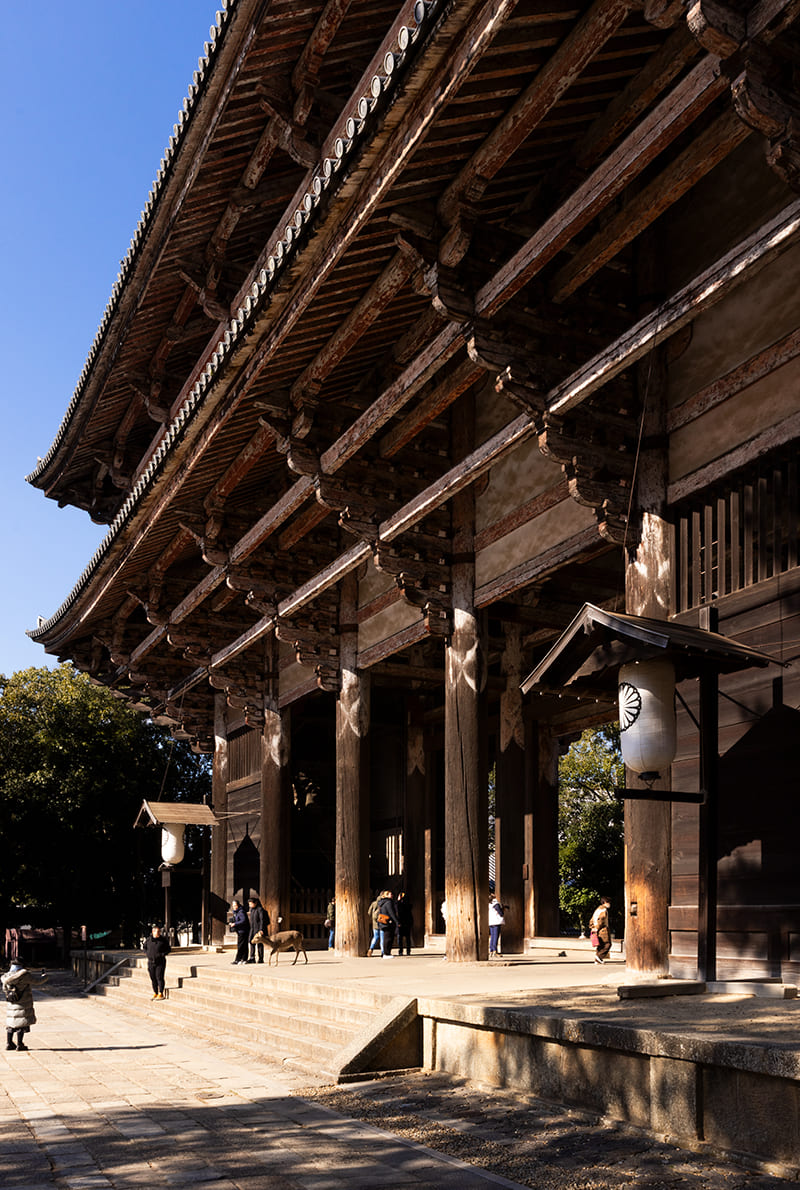
Nandai-mon gate(Great South Gate)
(1199)
This gate is located at the southern end of the temple complex, and is 24.5 meters in height. It was first built during the Nara Period (710-784) but was destroyed by a typhoon in 962 and then rebuilt during the Kamakura Period (1185-1333). It is characterized by its beautiful structure, which incorporated the then-innovative daibutsuyō style of architecture. Daibutsuyō techniques are visible throughout, such as the extensive use of horizontal wooden beams known as kan that pass through the pillars to strengthen the structure, and not adding a ceiling so as to leave the structure visible. In addition, the deep eaves are supported from below by six-layered kumimono entablatures that step outward from the columns, giving the exterior a sense of order and tension. Two wooden statues of Kongo Rikishi stand facing each other on the left and right sides of the gate. The gate was designated a National Treasure in 1951.
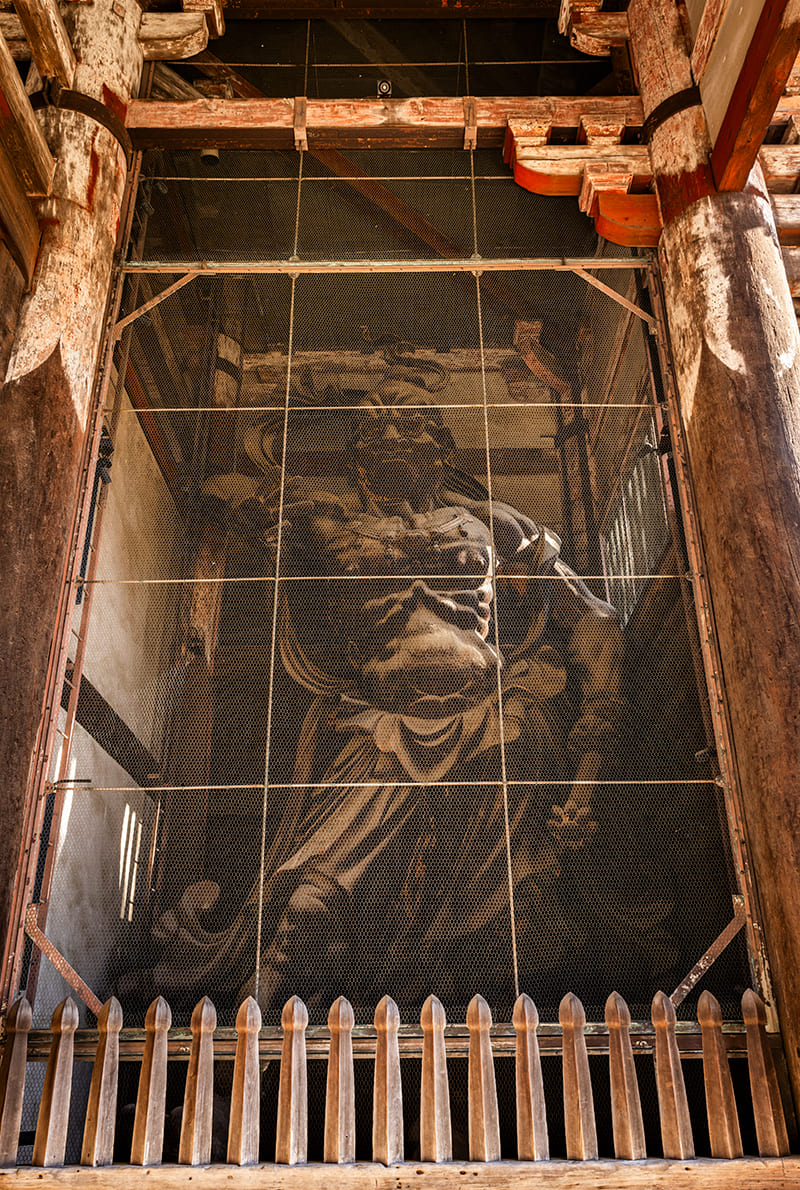
Kongo Rikishi
(1203)
The Kongo Rikishi are two large wooden statues almost 8.4 meters in height. They were created in just 69 days by four leading Buddhist sculptors of the Kamakura Period, including Unkei and Kaikei, to be placed in the Nandai-mon gate, which was rebuilt at the same time. The ungyō (closed-mouthed) and agyō (open-mouthed) statues were made using the joined block technique and contain some 3,000 parts each. They were designated National Treasures in 1958.
文化財の宝庫、東大寺を訪ねる。
東大寺は国家との関わりが深い寺院だ。奈良時代に聖武天皇は政治の基盤として仏教を採用し、国ごとの官立寺院「国分寺」の建立を進めた。東大寺はこれらをまとめる総本山として建立された。万物の救済を願い、その中心には、高さ14.23mの大仏像がつくられた。さらに大仏殿(金堂)、講堂、僧坊、2つの七重塔などが建てられ、広大な伽藍となる。東大寺は学問の拠点でもあり、国分寺に属する僧侶たちがここで学んだとされる。しかし1180年と1567年に戦火により大部分が焼失するなど大きな災害に遭い、再建が繰り返された。
明治時代に入ると神仏分離令や寺領の没収により、危機に直面。国家の庇護下を離れ、拝観料を基盤とする寺社運営への改革や、文化財保護の法整備などを背景に再興がはかられた。そして明治・昭和時代の大仏殿の大修理をはじめとする先駆的な防災対策が積み重ねられ、文化財の維持管理が徹底されてきた。境内には多くの文化財があり、年間300万人以上が訪れ、仏教の歴史や文化を伝える重要な寺院となっている。
Return to Sustainable Japan Magazine Vol. 32 article list page

